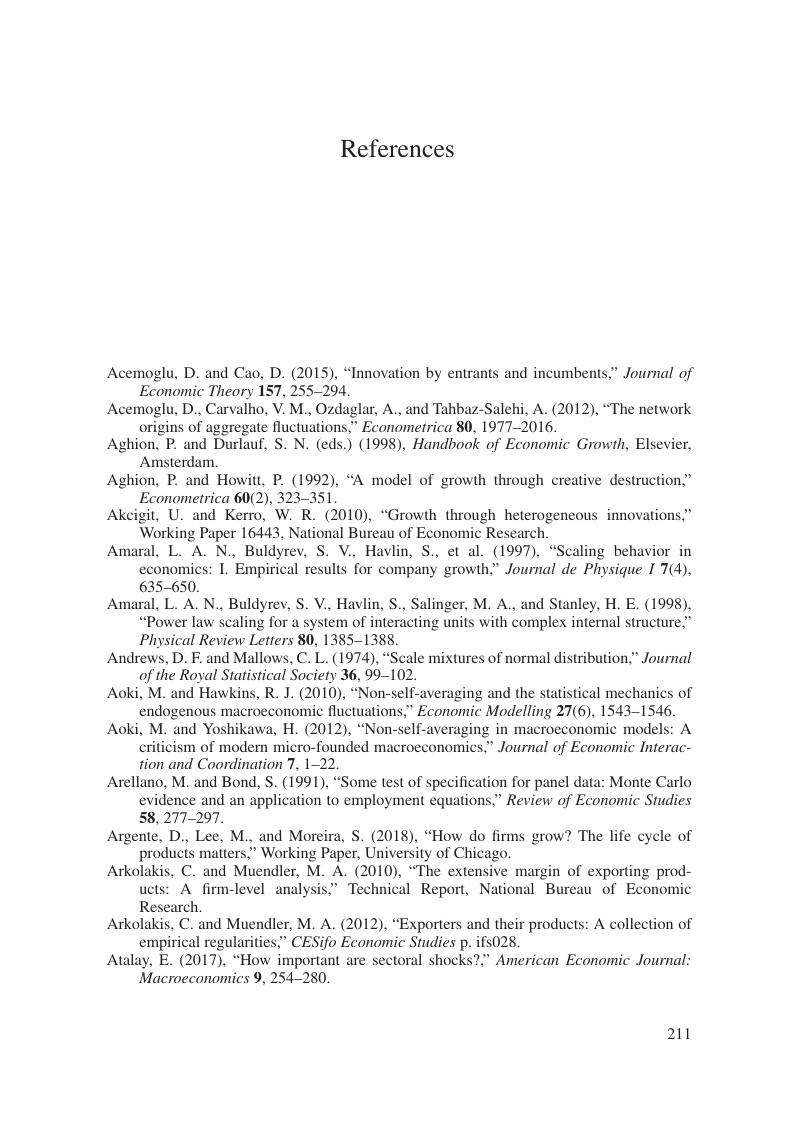 The Rise and Fall of Business Firms
The Rise and Fall of Business Firms References
Published online by Cambridge University Press: 12 May 2020
Summary

- Type
- Chapter
- Information
- The Rise and Fall of Business FirmsA Stochastic Framework on Innovation, Creative Destruction and Growth, pp. 211 - 220Publisher: Cambridge University PressPrint publication year: 2020
